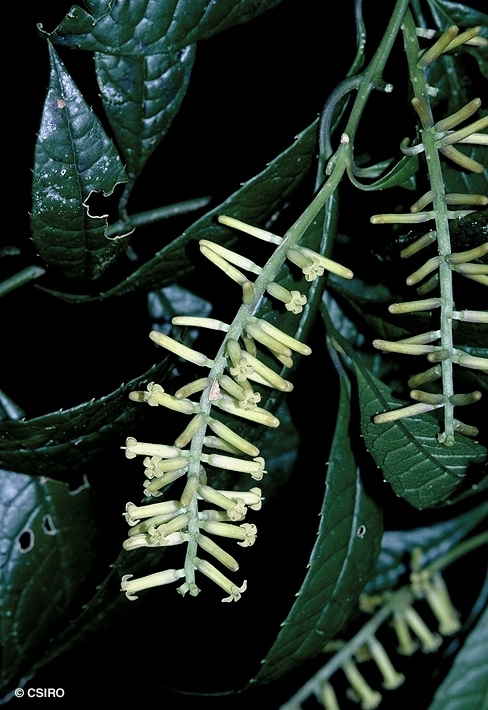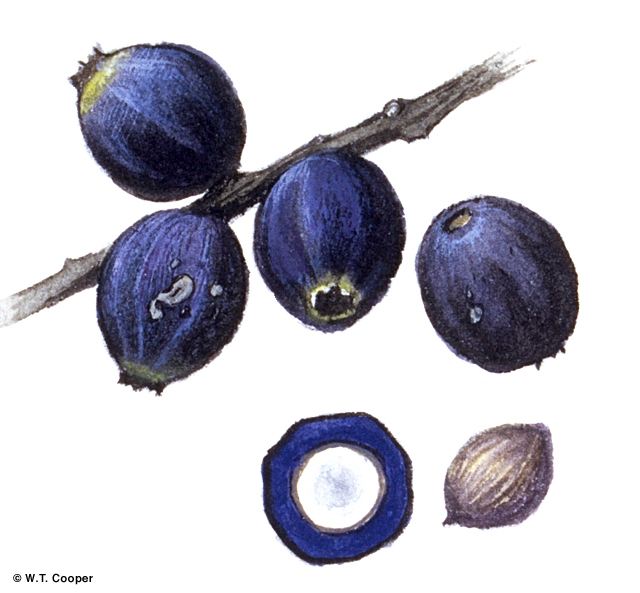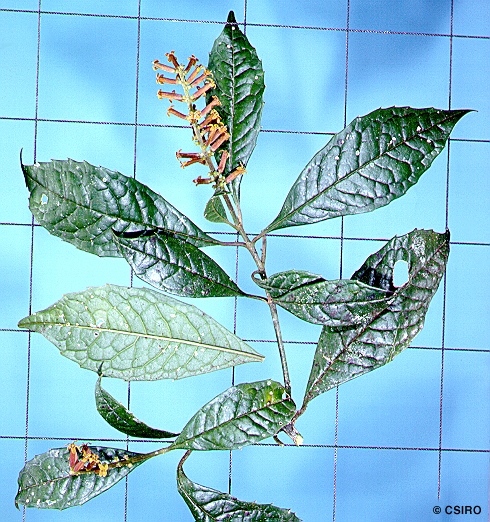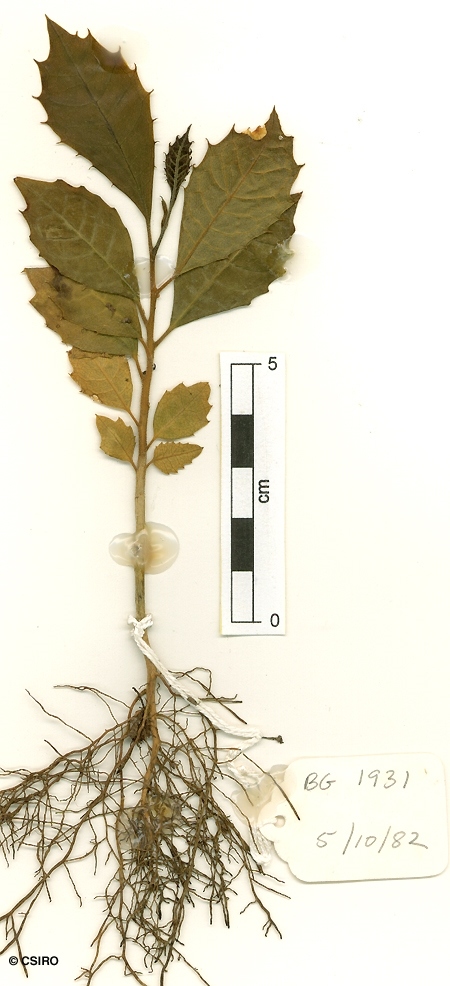Australian Tropical Rainforest Plants - Online edition
Polyosma rhytophloia C.T.White & W.D.Francis






White, C.T. & Francis, W.D. (1926) Proceedings of the Royal Society of Queensland 37: 158. Type: Eungella Range, about 40 miles westward of Mackay, W.D. Francis, October 3rd to 12th, 1922 (flowering specimens, type).
Wrinkled Bark Polyosma
Seldom exceeding 30 cm dbh. Lenticels usually conspicuous, pale, forming longitudinal lines on the stem. Oak grain in the inner blaze.
Fruits glabrous or minutely puberulous, globular or obovoid, about 10-12 x 9-10 mm. Seeds about 7-9 x 6-7 mm, mucronate at the apex.
Cotyledons linear-obovate, about 5-7 mm long, base sessile. First pair of leaves toothed with about 2-4 teeth along each margin. At the tenth leaf stage: leaf blade elliptic to obovate, apex acute or mucronate, base cuneate to attenuate, margin serrate, teeth with a fine point at the apex, 5-8 along each margin, hairy on the upper surface. Seed germination time 251 to 281 days.
Endemic to Queensland, occurs in NEQ and CEQ. Altitudinal range in NEQ from 600-1200 m. Grows as an understory tree in well developed upland and mountain rain forest.





